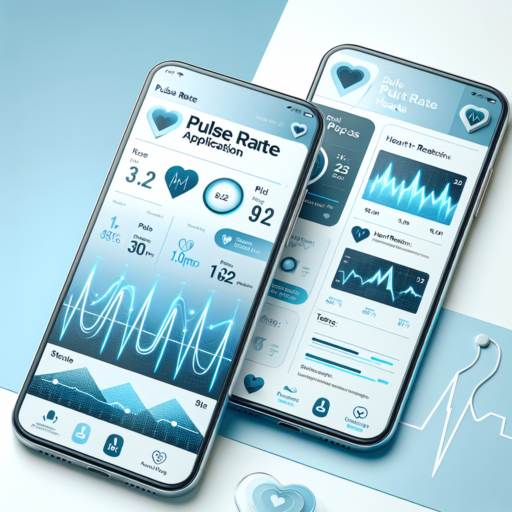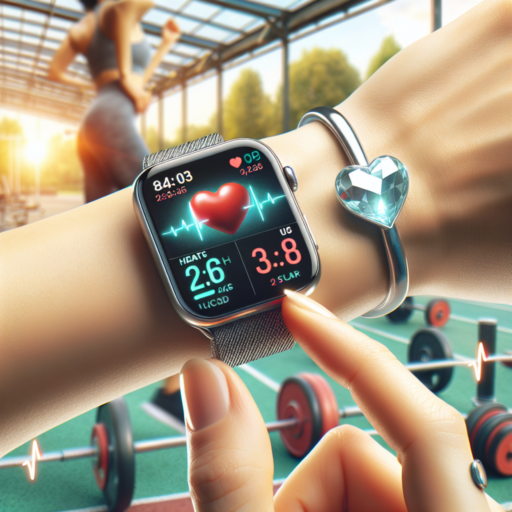No se han encontrado productos.
What is the pulse rate used for?
The pulse rate is a crucial metric in the medical field and beyond, serving as a vital sign that provides insights into an individual’s overall heart health and physiological state. Essentially, it’s the number of times the heart beats per minute, and it’s used for a range of applications, from health monitoring to fitness tracking. Understanding the various applications of pulse rate can help individuals and healthcare professionals make informed decisions about health and lifestyle.
Determining Cardiovascular Health
One of the primary uses of monitoring the pulse rate is in the assessment of cardiovascular health. A normal resting heart rate for adults ranges from 60 to 100 beats per minute, and deviations from this range could indicate underlying health issues. A significantly high or low pulse rate could point towards conditions like arrhythmias, heart disease, high blood pressure, or other cardiovascular anomalies, necessitating further medical evaluation and intervention.
Guiding Physical Activity and Fitness
For athletes and fitness enthusiasts, the pulse rate is an invaluable measure to guide their training regimens. By analyzing pulse rate before, during, and after exercise, individuals can gauge their fitness level, monitor their improvement, and ensure they are exercising within their optimal heart rate zones. This targeted approach to training helps in maximizing performance while minimizing the risk of overtraining or injury.
In essence, the pulse rate is more than just a number. It’s a gateway to understanding the body’s responses to various conditions and activities. Whether it’s for managing health conditions, optimizing physical training, or assessing stress and recovery, the pulse rate serves as a key indicator of well-being and physical fitness.
Is there an app for taking pulse rate?
Certainly, exploring the capabilities of modern smartphones reveals a fascinating development: the ability to take pulse rates through specialized applications. These apps harness the power of the phone’s built-in sensors or use the camera and flashlight to measure your pulse. It’s a feature that’s not only convenient but also provides critical health data at your fingertips.
How These Apps Work
Essentially, pulse rate apps work by detecting changes in blood flow. When you place your finger over your phone’s camera and flashlight, the app measures the light absorption changes as blood pumps through your finger. This data is then analyzed to calculate your heart rate. Importantly, the accuracy of these measurements can vary based on the app’s algorithm and the quality of your phone’s hardware.
Moreover, many of these apps come with additional features such as tracking your pulse rate over time, which offers insights into your cardiovascular health. This is particularly beneficial for those looking to monitor their heart rate for fitness or health reasons. It’s important to note, however, that while these apps can provide valuable information, they should not be used as a substitute for professional medical advice.
Examples of Pulse Rate Apps
Instant Heart Rate and Heart Rate Plus stand out as examples of apps dedicated to measuring pulse rate. Both apps utilize the camera method and offer a user-friendly interface, making it easy for anyone to track their heart rate. Additionally, these apps often include features like heart rate zones, which help users understand their heart rate in the context of their fitness levels and goals.
What are the applications of heart rate sensor?
The applications of heart rate sensors span across various fields, significantly impacting how health and fitness are monitored and improved upon daily. These nifty devices, integral to smartwatches and fitness bands, go beyond merely counting beats per minute; they contribute invaluable insights into users’ physical health and wellness practices.
Fitness Tracking and Enhancement
The most recognizable application of heart rate sensors is within the realm of fitness tracking. Athletes and fitness enthusiasts alike rely on these sensors to measure their heart rate variability (HRV), ensuring that they are training at optimal intensity levels. By analyzing this data, individuals can tailor their workouts to improve endurance, increase calorie burn, or even enhance recovery time, making their fitness regimen vastly more efficient.
Health Monitoring and Disease Prevention
Heart rate sensors play a crucial role in the ongoing monitoring of individuals’ health, especially in detecting and preventing heart-related diseases. These devices offer the ability to track resting heart rate over time, which can be an indicator of overall cardiovascular health. An unusual increase or decrease in resting heart rate can prompt early intervention, thereby preventing potential heart conditions from developing further.
Stress and Sleep Analysis
Another pivotal application of heart rate sensors is in stress management and sleep analysis. By monitoring slight variations in heart rate, these sensors can identify periods of high stress or poor sleep quality. This information enables users to make necessary lifestyle adjustments to reduce stress or improve sleep, significantly affecting their overall well-being and mental health.
What can you use to measure pulse rate?
Measuring your pulse rate is crucial for monitoring your heart health and physical fitness. There are several tools and devices designed specifically for this purpose, providing accurate and instant feedback on your heart’s performance. Understanding these options can help you keep a close eye on your cardiovascular health efficiently.
Manual Method with a Clock or Watch
One traditional method involves using a clock or watch with a second hand. By placing two fingers (usually your index and middle fingers) on your wrist or neck, you can feel your pulse. Count the number of beats in 60 seconds to get your pulse rate. Although this method requires no special equipment, it relies on your ability to accurately count and may not be as precise as using a specialized device.
Digital Pulse Monitors
For those seeking more convenience and accuracy, digital pulse monitors are a fantastic choice. These devices come in various forms, such as wristwatches, smartwatches, and fitness trackers. They use sensors to detect your pulse rate and display the results almost instantaneously. Some advanced models even offer additional features like storing your pulse rate over time, enabling you to track changes and patterns in your heart rate.
Smartphone Applications
In recent years, the rise of smartphone applications designed to measure pulse rate has provided a handy alternative. These apps typically use the phone’s built-in camera and flashlight to detect blood flow changes in your fingertip, calculating your heart rate. Though convenient and easy to use, these apps may vary in accuracy, so they are best used for casual monitoring rather than medical purposes.
Each of these methods has its own advantages, from the simplicity and low cost of the manual technique to the sophisticated features offered by digital devices and apps. Whether you are a fitness enthusiast, a health-conscious individual, or someone monitoring a heart condition, knowing your pulse rate is an essential aspect of health management.




